Why You Need Emergency Water Storage
Today it’s all about why you need emergency storage water for survival. If we turn on the television or read a newspaper it’s quite evident that if a disaster were to affect our community the water may be shut off in a split second. That’s right, with zero warning.
Please don’t count on using that water heater unless you have a turn off valve you can switch BEFORE your water is contaminated. Oh, and if you have a pool, if we lose power for an extended amount of time that water source will become a poisonous algae mess.
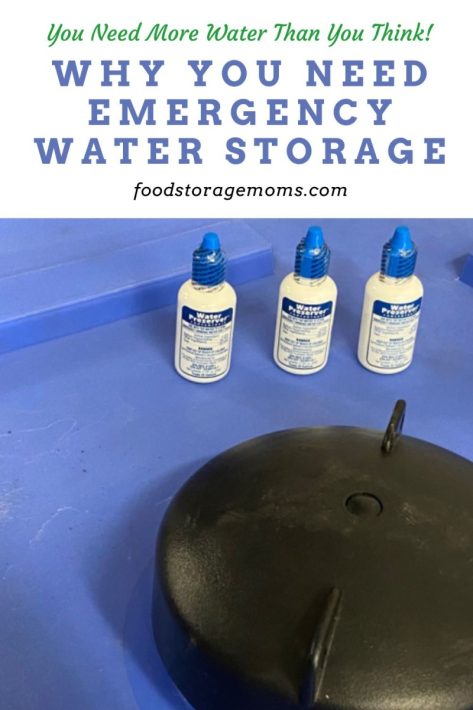
Or, the water coming through our water lines could be contaminated and we’ll be unable to safely drink it, cook with it, or even shower with it. I don’t want to be standing in line to get a case of water for my family from my city government after an unforeseen disaster unless my home is totally destroyed. American Red Cross (see page 7)
I’ve seen the lines on television with people waiting to get a case or two of water from their city offices. Please store some water for your family so you’ll be prepared for the unknown. I suggest four gallons of water per person per day.
I know the American Red Cross suggests only one gallon per person per day. I need water and lots of it. That’s all I drink all day, I would rather have too much water than have to tell my family “We are out of water.” Yikes!
Emergency Water Storage
One thing to think about is after water is stored for a long period of time the taste may not be what you are expecting. For this reason, I suggest storing some hot chocolate mix (or making your own) and some flavored packets. I’m just giving you the heads up here.
I think you know what I’m talking about, like when you go to a restaurant and the water is filtered, it tastes good. Sometimes we go to another place and the water is not filtered and the water doesn’t taste so great.
I highly suggest you keep water in your car in case you need to evacuate your home, or even if you are traveling and the car breaks down or the road is closed for an extended time. I was thrilled to see my daughter in California has two cases of Blue Cans in the back of her car for emergencies! Blue Cans *Please note, Brownells is out of stock right now now. PLEASE get on their PLEASE NOTIFY ME LIST.
I want you to think about where you would have to go get water if your water supply stopped. For instance, I live in Northern Utah where much of the city water comes from the creeks flowing from the mountains. The Jordan River, which is about 2 blocks away form my house, takes water from Utah Lake and empties into the Great Salt Lake. When I look at the color of that river water, I don’t want to be using it to hydrate my family, even if filtered!
If it was tainted, I would not go south 20 miles to Utah Lake because they get algae several times a year. Most of our water comes from the creeks flowing down the canyons so most of the time should have some water sources. But I never depend on that water as a backup in emergencies. I need to have water stored here at home where I know its source, treatment, and availability.
I’ve Waited Three Years To Fill These
Most of you know it took three long years to have our small 1000-square-foot home built. It’s an ADU aka Accessory Dwelling Unit you can build behind another home if you can get your city to approve the plans. After 1-1/2 years we finally got the city to do their job. It has not been a good experience waiting for your food storage and water tanks being stored in climate control units for 3 years.
So, this last weekend we washed them with bleach, no soap, I don’t want bubbles or soap in my tanks. We have one 250-gallon high-capacity tank and two 160-gallon tanks that stack on top of each other. All three units have two spigots. Please bear with me with me while I share the pictures of what we had to do to fill them. Keep in mind they were originally filled in Southern Utah. We drained them to move, of course.
1. Lead Free Drinking Water-RV Hose
You can find any hose that is lead-free-RV safe for drinking water. We needed 100 feet to reach all three tanks. We won’t use these hoses for anything else. RV Drinking Hose
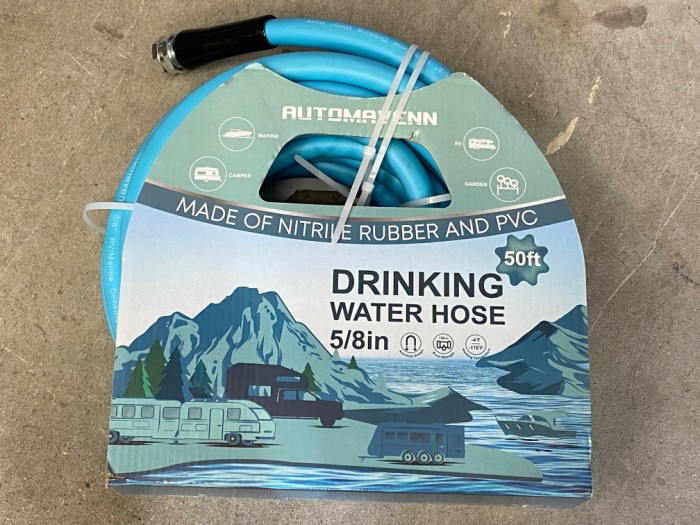
2. Water Preserver Filling 160 Gallon Tanks
If you use Water Preserver you’ll only have to rotate out the water every 5 years according to the EPA. Water Preserver
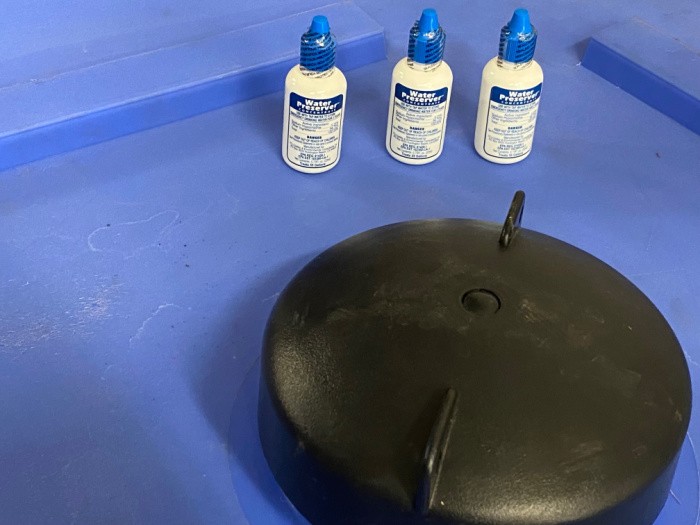
3. Two Stackable 160 Gallon Tanks
Each one of these tanks will be filled with 160 gallons of water and then stacked on top of each other. They were designed to stack and it really saves space.
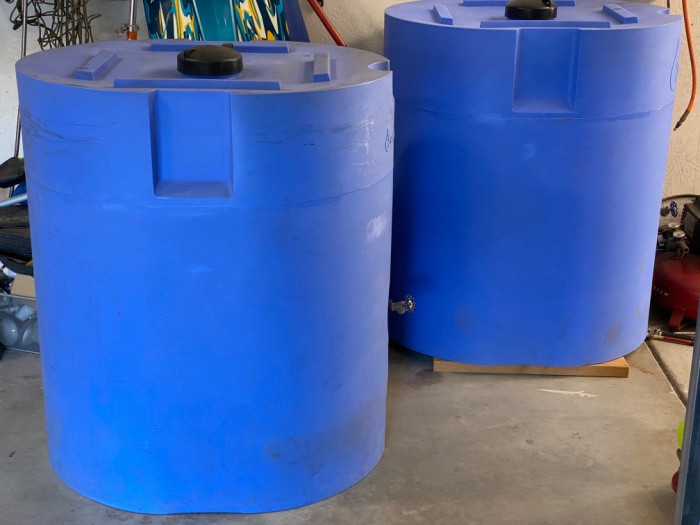
4. 160 Gallon Stackable High-Capacity Tanks
I was asked to try out one of these tanks and I purchased a second one. Yes, I wrote a great review about them. I wish I could have gotten my neighbors in Southern Utah to buy them. We could have gotten them 1/2 price, they weren’t interested, for some reason.
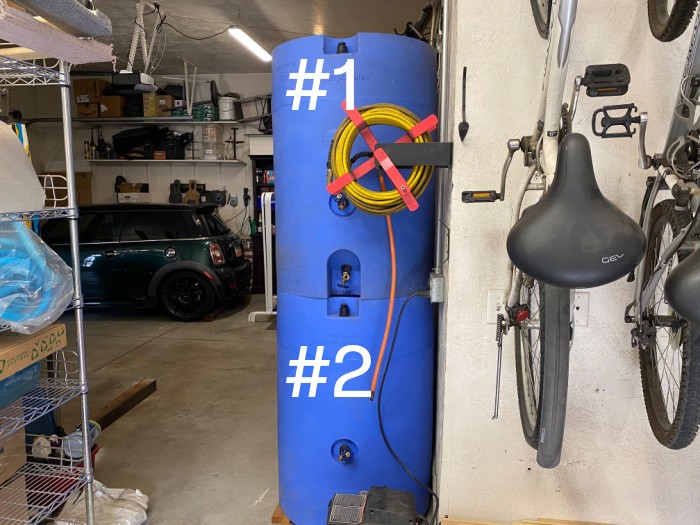
5. 250-Gallon High Capacity Tanks
I bought this one in Southern Utah and was able to get a good price for my neighbors but most people were not interested in storing water. Only one neighbor in our neighborhood decided to get one. He understood the need to store water. Oh well, I have water in mine now, and I’m a happy woman. I wouldn’t have made any money by promoting them, but couldn’t stir up any takers.
As you can see, we needed a ladder to fill this one. We’re going to anchor it to the wall after we get the anchor at Home Depot. All tanks are on 2 by 4’s of wood to store them on the concrete. Someone asked me where I heard that I needed to do this so chemicals didn’t leach into the container. I can’t remember where I heard that advice. What can it hurt? So I do it.
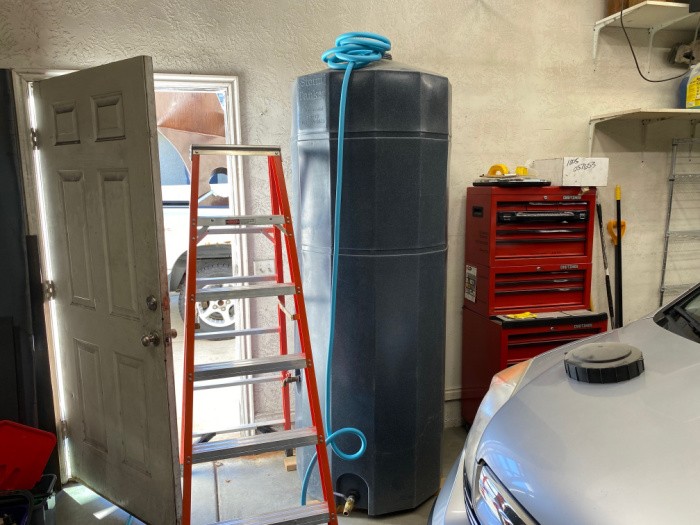
Possible Water Contamination
It is vital to have water storage to sustain life and ultimately survive. Many times in natural disasters the electricity goes down and we are unable to access water via our hoses, taps, etc. because the local water utility, or even home well systems no longer work.
Sometimes the water is contaminated by flooding and cross-contamination from sewage. You will need water for a minimum of three days. If we don’t have water, we’ll not be able to use much of the freeze-dried or dehydrated food we plan to eat every day when challenges come our way. Of course, we can eat and drink the liquid in the canned foods like fruits and vegetables we should have stored.
Lead-Free Hoses
Some water hoses have lead in them; use a lead-free hose to fill your containers. Lead Free Hose
Minimum water needed per day:
- 1 gallon per day per person to stay hydrated. If you live in an extremely HOT area you might need more.
- 4 gallons per day, per person, allows for personal hygiene, hydration, limited laundry, and cooking, etc.
- 5-12 gallons per day would be needed for a conventional toilet.
- 1/2 to two gallons for a pour and flush latrine.
Boiling water for use:
- Boil filtered and settled water vigorously for one minute (at altitudes above one mile, boil for three minutes).
- To improve the flat taste of boiled water, aerate it by pouring it back and forth from one container to another and allowing it to stand for a few hours, or add a pinch of salt for each quart or liter of water boiled.
Bleaching/purifying water:
- Information from Clorox: When boiling water for 1 minute is not possible in an emergency situation, you can disinfect your drinking water with Clorox®Regular-Bleach as follows:
- Remove suspended particles by filtering or letting particles settle to the bottom.
- Pour off clear water into a clean container.
- Add 8 drops of Clorox® Regular-Bleach (not scented or Clorox® Plus® bleaches) to one gallon of water (2 drops to 1 quart). For cloudy water, use 16 drops per gallon of water (4 drops to 1 quart).
- Allow the treated water to stand for 30 minutes. Water should have a slight bleach odor. If not, repeat and wait another 15 minutes. The treated water can then be made palatable by pouring it between clean containers several times.
Storing Water Ideas
Water Preserver Concentrate **This Water Preserver only needs to be changed out every five years. The bleach used in water containers will need to be rotated out every six months.
- Water Preserver is recommended by top emergency professionals
- It is approved by the EPA
- Have systems available to filter your water. I like the products from Big Berkey and PortaWell. I have both and they each have pros and cons. Big Berkey works on a gravity-based approach which is slow but works great. PortaWell uses an electric pump to push the water through the filters. You can get solar panels to charge the battery when needed. It is more high volume and can filter 60 gallons an hour.
Final Word
We must have emergency water storage for survival. You’ll be glad you did, I promise. I didn’t cover the various storage container options you should consider based on storage space, the number of people you’ll be storing water for, and the available budgeted funds. I have posts on smaller containers and other water storage issues. You can check out my water storage posts in my archive to get more valuable information. Start storing water and know you’ll be ready for the next emergency. May God Bless the World, Linda
Copyright Images: Depositphotos_26778051_m-2015

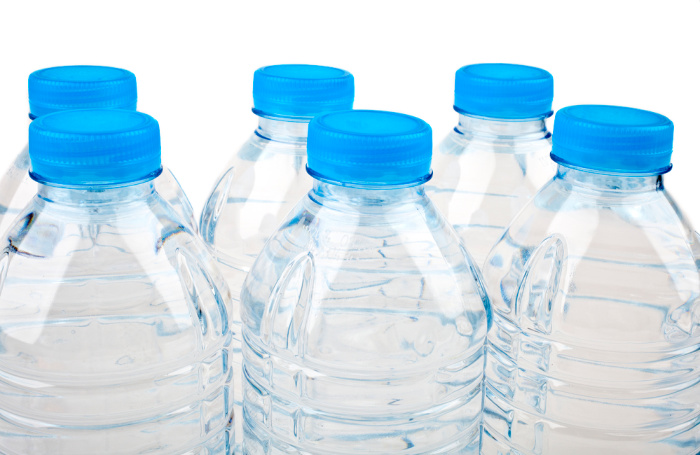

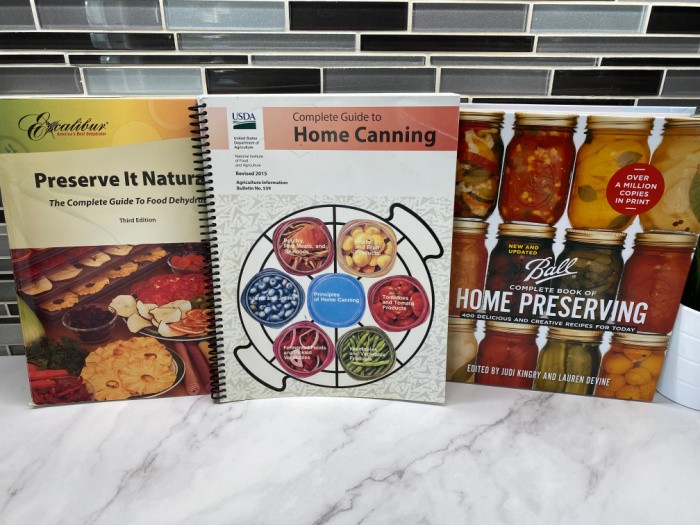
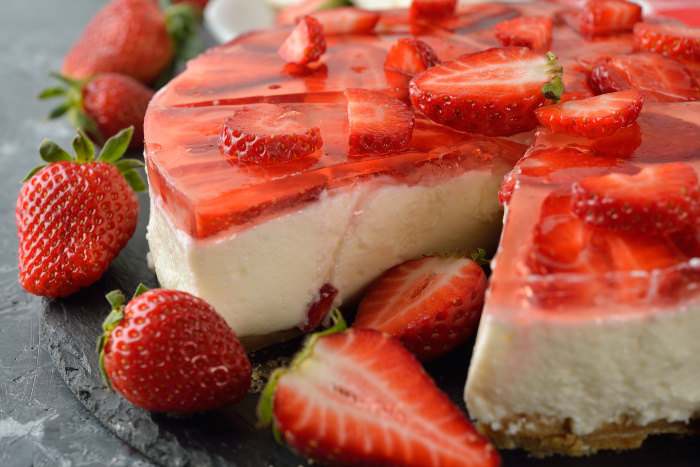
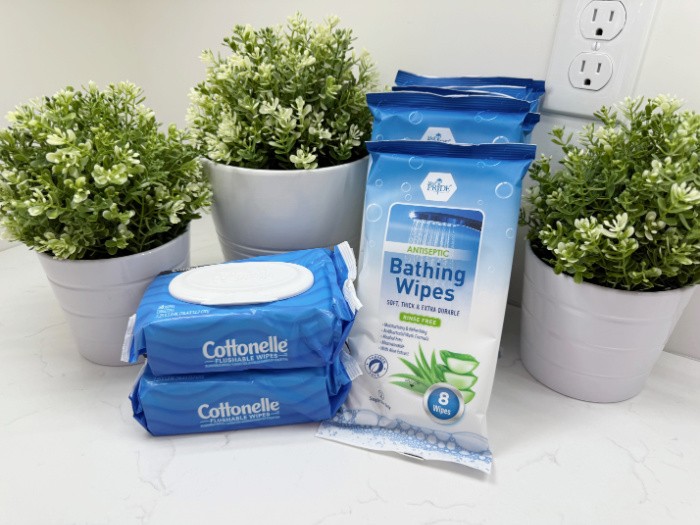
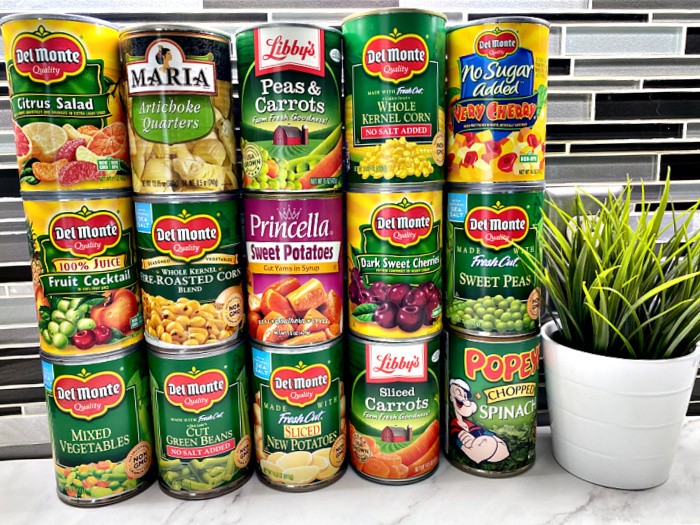
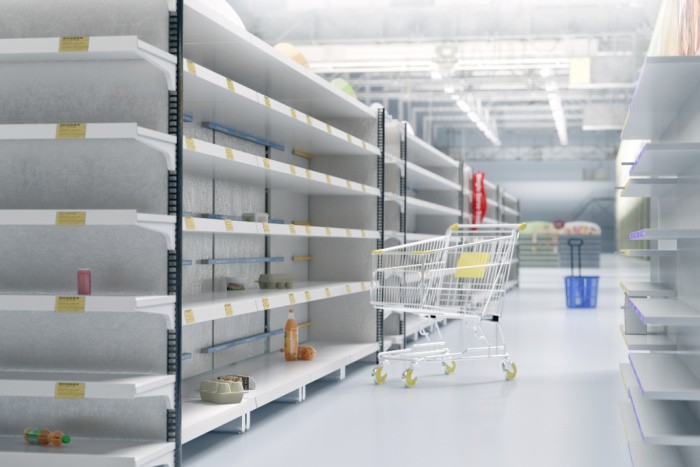
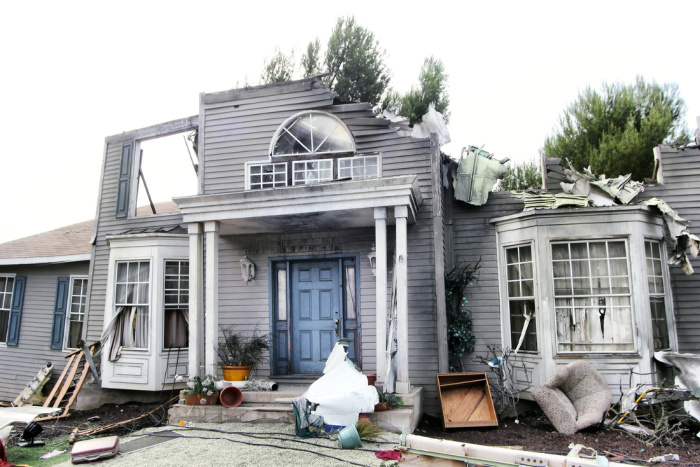













Off the subject, but this is the only way I know how to contact you!
Can you please tell me what brand of essential oils you prefer? It wouldn’t be an endorsement, just an opinion!
Kathie
Hi Kathie, I only use DoTerra essential oils. I have tried others but I like the quality of DoTerra. I would love to sell the oils but I feel strongly that I am here to teach the world. I don’t want my website to be known as the website that is always pushing “it’s your last chance to buy this e-book or this product.” You can always PM on Facebook: Linda Loosli. Or you can email me at foodstoragemoms@yahoo.com I learn a lot from my readers too! Linda
Good list Linda!
So – Big Berkey – check.
2 rain barrels – check.
51 gallons of water stored – check.
Plus don’t forget! You can use those square bottom juice/tea bottles in the freezer. I’ve got many bottles frozen in the freezer – if the power goes out they’ll keep the food frozen a wee bit longer, plus when they do melt we’ll have water for drinking or whatever we need!
Cheryl
Hi Cheryl, rain barrels are on my wishlist!! Good job! I love your idea of having many bottles in the freezer! I have one a one-gallon jug! We do what we need to in order to have water!!! Linda
3 Words: Water, Water, Water.
Prep like you mean it. We are now in week 4 of the helluva Hurricane, Heene. Electricity came on 2 1/2 weeks ago and we are very grateful. No other services (that we take for granted) are operational as of now. We underestimated the power, the need for water. I had stored a whole wall of cases of water in our basement 4+ years ago…not nearly enough. Thankfully our small town set up a Resource Center so I go there many times per week for water and dumping trash. Our beloved dogs appreciate the water. Store it, and when you think you have enough, store some more!
Respectfully, DM
Hi DN, I thank you from the bottom of my heart for telling your story! 2-1/2 weeks without power, 4 weeks no running water, I can’t even imagine what you are going through. What I’m hearing from you we could go without power longer than water, I would have guessed this but you are living it. May God bless you, we are all praying for you and your families and the people who are helping you. Thank you my friend, Hugs, from Utah, Linda
Dear Linda. Thank you for your kind words and what I believe is your sincere support. You are a treasure.
Keep beating that drum in regards to water storage!
Hugs, Diane
Hi Diane, tomorrow is about pantries, I started teaching classes in a fancy kitchen store (I couldn’t afford half the stuff in there, LOL) but I taught people how to make bread, cinnamon rolls, and so much more. This is why I love writing my blog I get to hear from friends all over the world. We may never meet, or if you ever come through Salt Lake City, Utah I can meet you for lunch or dinner. I love to help people and this forum we help each other. I pray things get better soon for you. Hugs, Linda
Water seems to be my biggest challenge! I live in a small 2-bedroom house with no outside storage (aka garage or shed). I simply do not have room for large water storage containers. I have a few of the water bricks but that will only last a few days at most. I have tried to figure out how to rearrange things so I had room for larger containers, but my struggle is real: very little storage area, fixed income that prohibits purchasing more bricks, etc. Plus, the struggle with lifting and dealing with larger containers of water! It is a work in progress, but the progress is slow.
Hi Leanne, oh if I hadn’t gotten these in St.George, Utah for the price I paid I wouldn’t have been able to buy them. Plus the 250 gallon one, I had the company deliver it and set it up in my garage. They are so cumbersome but I wanted to bring them with me up north so they were put on the U-Haul truck. Inside my house its WaterBricks or BlueCans for me. The 55 gallon ones have to be stored outside, and you hope they don’t freeze and crack (leave space for expansion). Ours made it through several below 32 degree temperatures. I gave them to my sister and her friend because where I live now, there is zero place to store them. My SIL didn’t want the three I brought with me. Such is life. Once you’ve been through a disaster like I have and you have we get it. You can always melt clean snow, Leanne. You will survive, I have no doubt about you, my sweet friend. Linda
Stale water can be freshened by pouring back and forth between two containers adding a bit of oxygen back into it. Another trick I use is to use just a hint of powdered drink mix in a one or two quart jug to give the water the tiniest bit of flavor without turning it into a sugary drink. Sure, you can use the regular amount to make a beverage, but as a diabetic I need to watch my sugar intake and most of the sugar free drink mixes taste strange to me.
Thanks for keeping everyone informed so we can be as prepared as possible when things go sideways.
HI DmWalsh, thank you for your kind words, my sweet friend. I agree a little flavor goes along way in helping the stale water taste. Linda